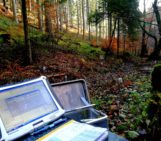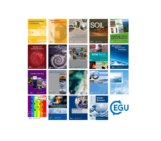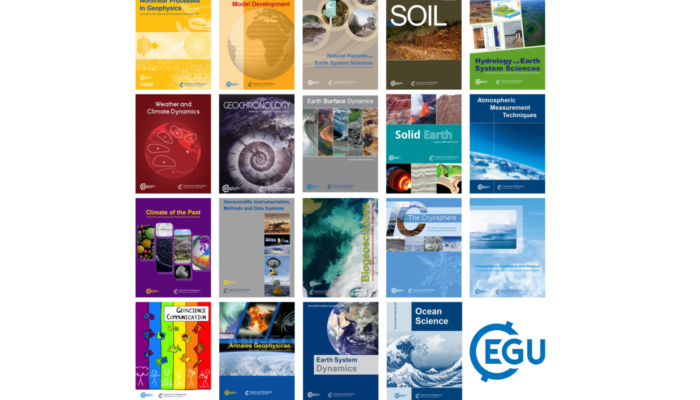
Each month we feature specific Divisions of EGU and during the monthly GeoRoundup we put the journals that publish science from those Divisions at the top of the Highlights roundup. For August, the Divisions we are featuring are: Cryospheric Sciences (CR), Energy, Resources and the Environment (ERE) and Atmospheric Sciences (AS). They are served by the journals: Annales Geophysicae (ANGEO), Atmospheric Chemistry and Physics (ACP), Atmospheric Measurement Techniques (AMT), Earth System Dynamics (ESD), Geoscientific Model Development (GMD), SOIL, The Cryosphere (TC) and Weather and Climate Dynamics (WCD).
Featured highlights
Atmospheric Chemistry and Physics:
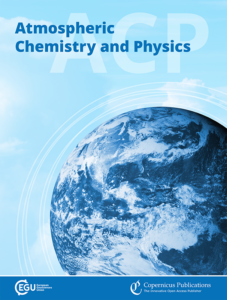 Detection of large-scale cloud microphysical changes within a major shipping corridor after implementation of the International Maritime Organization 2020 fuel sulfur regulations – 2 August 2023
Detection of large-scale cloud microphysical changes within a major shipping corridor after implementation of the International Maritime Organization 2020 fuel sulfur regulations – 2 August 2023
Fuel sulfur regulations were implemented for ships in 2020 to improve air quality but may also accelerate global warming. We use spatial statistics and satellite retrievals to detect changes in the size of cloud droplets and find evidence for a resulting decrease in cloud brightness within a major shipping corridor after the sulfur limits went into effect. Our results confirm both that the regulations are being followed and that they are having a warming influence via their effect on clouds.
A rise in HFC-23 emissions from eastern Asia since 2015 – 23 August 2023
Based on atmospheric HFC-23 observations, the first estimate of post-CDM HFC-23 emissions in eastern Asia for 2008-2019 shows that these emissions contribute significantly to the global emissions rise. The observation-derived emissions were much larger than the bottom-up estimates expected to approach zero after 2015 due to national abatement activities. These discrepancies could be attributed to unsuccessful factory-level HFC-23 abatement and inaccurate quantification of emission reductions.
Atmospheric Measurement Techniques:
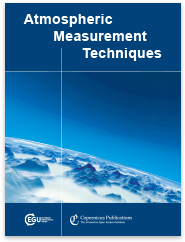 The EarthCARE mission – science and system overview – 9 August 2023
The EarthCARE mission – science and system overview – 9 August 2023
The EarthCARE satellite is due for launch in 2024. It includes four scientific instruments to measure global vertical profiles of aerosols, clouds and precipitation properties together with radiative fluxes and derived heating rates. The mission’s scientific requirements, the satellite and the ground segment are described. In particular, the four scientific instruments and their performance are described at the level of detail required by mission data users.
Drone-based meteorological observations up to the tropopause – a concept study – 11 August 2023
The first atmospheric soundings with an electrically powered small uncrewed aircraft system (UAS) up to an altitude of 10 km are presented and assessed for quality, revealing the potential to augment atmospheric observations and fill observation gaps for numerical weather prediction. This is significant because of the need for high-resolution meteorological data, in particular in remote areas with limited in situ measurements, and for reference data for satellite measurement calibration.
Geoscientific Model Development:
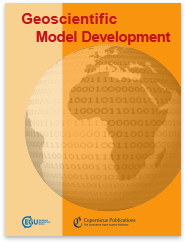 DSCIM-Coastal v1.1: an open-source modeling platform for global impacts of sea level rise – 4 August 2023
DSCIM-Coastal v1.1: an open-source modeling platform for global impacts of sea level rise – 4 August 2023
This work presents a novel open-source modelling platform for evaluating future sea level rise (SLR) impacts. Using nearly 10 000 discrete coastline segments around the world, we estimate 21st-century costs for 230 SLR and socioeconomic scenarios. We find that annual end-of-century costs range from USD 100 billion under a 2 °C warming scenario with proactive adaptation to 7 trillion under a 4 °C warming scenario with minimal adaptation, illustrating the cost-effectiveness of coastal adaptation.
The three-dimensional structure of fronts in mid-latitude weather systems in numerical weather prediction models – 7 August 2023
We investigate the benefit of objective 3-D front detection with modern interactive visual analysis techniques for case studies of extra-tropical cyclones and comparisons of frontal structures between different numerical weather prediction models. The 3-D frontal structures show agreement with 2-D fronts from surface analysis charts and augment them in the vertical dimension. We see great potential for more complex studies of atmospheric dynamics and for operational weather forecasting.
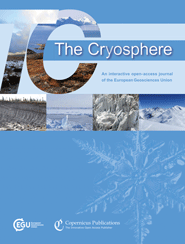 Widespread slowdown in thinning rates of West Antarctic ice shelves – 18 August 2023
Widespread slowdown in thinning rates of West Antarctic ice shelves – 18 August 2023
We report on a slowdown in the rate of thinning and melting of West Antarctic ice shelves. We present a comprehensive assessment of the Antarctic ice shelves, where we analyse at a continental scale the changes in thickness, flow, and basal melt over the past 26 years. We also present a novel method to estimate ice shelf change from satellite altimetry and a time-dependent data set of ice shelf thickness and basal melt rates at an unprecedented resolution.
Stagnant ice and age modelling in the Dome C region, Antarctica – 21 August 2023
We combined a numerical model with radar measurements in order to determine the age of ice in the Dome C region of Antarctica. Our results show that at the current ice core drilling sites on Little Dome C, the maximum age of the ice is almost 1.5 Ma. We also highlight a new potential drill site called North Patch with ice up to 2 Ma. Finally, we explore the nature of a stagnant ice layer at the base of the ice sheet which has been independently observed and modelled but is not well understood.
Other highlights
Potential bioavailability of representative pyrogenic organic matter compounds in comparison to natural dissolved organic matter pools – 14 August 2023
Geoscientific Instrumentation, Methods and Data Systems:
New ring shear deformation apparatus for three-dimensional multiphase experiments: first results – 16 August 2023
EGU in the news – August
- Take me to the river: Tinipak As documented by its people (Vogue, Philippines) mentions a poster presentation at EGU’s General Assembly EGU23
- A sinking feeling across Uttarakhand (The Times of India) cites a study introduced for discussion at the European Geosciences Union
- Heavy rains trigger floods and landslides in India’s Himalayan region of Himachal Pradesh, leaving at least 48 dead (ABC News Australia) cites EGU press release
- Disappearing clouds blamed for ‘crazy’ rise in ocean temperatures (The Telegraph) mentions study published in the EGU open access journal Atmospheric Chemistry and Physics
- Estuaries as climate gas hotspots (Phys.Org) mentions study published in the EGU open access journal Biogeosciences
- Cleanup on the disaster aisle (Temblor) cites study presented at the European Geosciences Union General Assembly EGU23
- ‘We’re changing the clouds.’ An unintended test of geoengineering is fueling record ocean warmth (Science) mentions new preprint in EGU’s Atmospheric Chemistry and Physics
- Scientists study how planetary waves affect atmospheric dynamics (Phys.Org) cites study published in the EGU open access journal Atmospheric Chemistry and Physics
- Gemstones Preserve 1.5-Billion-Year-Old Lifeforms In Stunning 3D (Forbes) mentions study published in the EGU open access journal Biogeosciences

